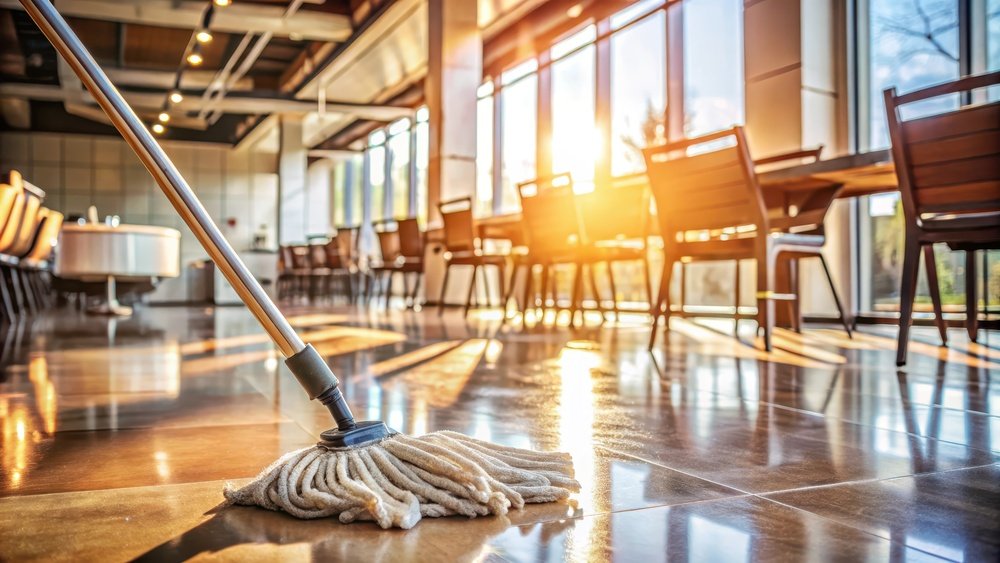Every type of business cleaning project has its unique challenges and needs. For example, cleaning an office is far different from cleaning an industrial workshop. For each unique space there are different tools of the trade cleaners depend on. We can illustrate the point by discussing restaurants.
One thing that makes cleaning restaurants so interesting is the different spaces. Front-of-house cleaning deals with the entryway and lobby, the dining room, the waiting area, and the bar (if applicable). Back-of-house cleaning addresses the kitchen, food storage areas, and the area where dishes are washed. Front and back-of-house vary quite a bit. But even within each of these two main areas, they are smaller and even more distinguishable areas with special needs.
Basic Cleaning Tools for Every Restaurant
A commercial cleaning provider would bring some basic tools to every restaurant. Out front, that would mean liquid cleaning chemicals along with cleaning cloths for tables, chairs, bar top, etc. Floors are cleaned on a daily basis based on surface type. Carpets are vacuumed and hard floors are swept and mopped.
Back-of-house cleaning always includes mops and mop buckets. Commercial kitchen floors need to be cleaned and mopped at least daily in order to keep grease to a minimum. In especially busy kitchens, staff might take a few minutes to mop in the switchover from lunch to dinner.
Other basic cleaning tools include:
- Grill scrapers and squeegees.
- Plastic and wire brushes.
- Sponges, steel wool, and cleaning cloths.
- Cleaning chemicals designed specifically for the kitchen.
All the basic cleaning tools because of the majority of the day-to-day work. But then there are some extra tools cleaning services bring in for more specific work.
Bigger Tools for Bigger Jobs
Most daily cleaning needs can be handled with basic tools. For those bigger jobs, cleaning crews need bigger tools. Here are four prime examples:
1. Steam Cleaners
A steam cleaner is the perfect tool for deep cleaning and sanitizing floors, walls, appliances, and hard-to-reach areas. A steam cleaner can work wonders to get a commercial kitchen’s exhaust system sparkling clean.
The big advantage of steam cleaning is that it cuts through the grime and grease that easily builds up in a commercial kitchen. It also kills bacteria with no need for any harsh chemicals. That makes team cleaning ideal for grills, fryers, and ovens.
2. Pressure Washers
For excessively greasy surfaces, one of the most effective cleaning tools is the pressure washer. A pressure washer combines high-pressure and high-temperature water with degreasers capable of eliminating even the most stubborn layers of grease and grime. All the while, the degreaser also sanitizes the space.
3. Floor and Counter Scrubbers
While mopping and manual counter cleaning is adequate on a day-to-day basis, deep cleaning floors and counters requires specialized scrubbers. These are machines that dig in scrub away embedded food particles that will not come up with mopping or manual cleaning.
4. Carpet Cleaners
Out front, restaurant carpets need to be deep cleaned every now and again. There is no better tool for this job than the commercial carpet cleaner. This is usually a steam cleaner utilizing cleaning chemicals designed expressly for commercial carpets. A steam cleaner does far more for the dining room carpet than a vacuum alone.
Restaurant cleaning is unique in so many ways. It is something we do here at All Pro Cleaning Systems. If you would like to know more about how we clean restaurants or talk about setting up a customized cleaning schedule for your establishment, contact us right away. One of our team members will be happy to help.


